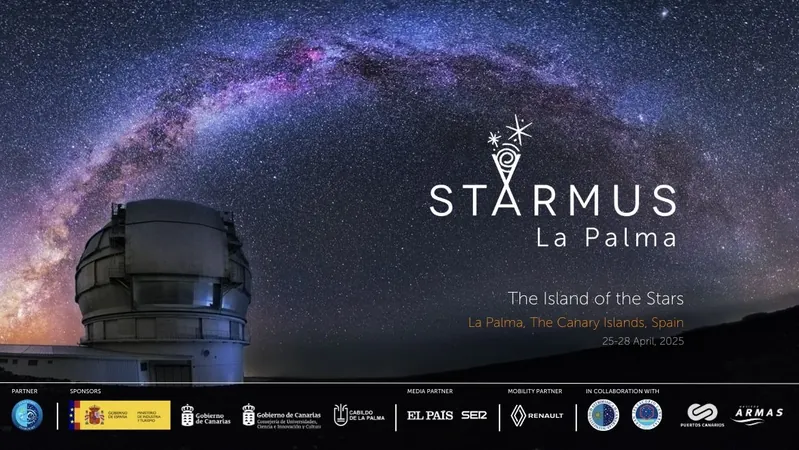
Asteroid Alert: New 3D Model Shows Moon-Hitting Risks and Jupiter's Role!
2025-04-14
Author: Michael
Astronomers at the Gemini South telescope in Chile have crafted a groundbreaking 3D model of an asteroid that may someday collide with our Moon. This analysis unveils critical insights into its size, spin, and even an unexpected nudge from Jupiter that could have sent it on a collision course.
Discovered on December 27, 2024, by the Asteroid Terrestrial-impact Last Alert System (ATLAS), asteroid 2024 YR4 is currently on a path away from Earth but will swing back into proximity in the future. Initially, it posed a slight risk of an Earth impact in December 2032, but that probability has dramatically decreased to near-zero. Now, scientists have shifted their focus to a new potential threat: a collision with the Moon.
On February 7, 2025, the Gemini South team, led by Bryce Bolin from Eureka Scientific, conducted detailed observations of 2024 YR4, capturing crucial images across multiple light wavelengths. Their findings revealed not only the asteroid’s composition but also enabled the creation of a comprehensive 3D map showcasing its unique form.
Bolin emphasized the importance of these observations: "Our insights into 2024 YR4 are pivotal in understanding the characteristics of Earth-crossing asteroids, many of which remain poorly understood." The team identified 2024 YR4 as an S-type asteroid, composed mainly of silicates, with an estimated diameter of 30 to 65 meters, marking it as one of the larger near-Moon threats in recent memory.
While it's highly likely that 2024 YR4 will miss the Moon, should it collide, scientists view this as a rare opportunity to analyze the impact crater it would leave behind—paving the way for greater knowledge about impact events.
In a surprising twist, the observations indicated that 2024 YR4 possesses a flat, disc-like shape, resembling a 'hockey puck,' rotating every 20 minutes. This discovery contrasts sharply with the typical potato-like shapes most asteroids exhibit.
Further investigations revealed that this asteroid originates from the main asteroid belt and was likely nudged towards Earth by Jupiter's gravitational pull. Notably, 2024 YR4 rotates in a retrograde direction—suggesting an intriguing migratory path through the cosmos.
Martin Still, NSF program director at the International Gemini Observatory, underscored the necessity of such studies, stating, "Understanding these near-Earth asteroids is critical for assessing collision risks between our planet and foreign bodies in crossing orbits. The Gemini telescopes are indispensable tools for advancing our planetary defense capabilities."









 Brasil (PT)
Brasil (PT)
 Canada (EN)
Canada (EN)
 Chile (ES)
Chile (ES)
 Česko (CS)
Česko (CS)
 대한민국 (KO)
대한민국 (KO)
 España (ES)
España (ES)
 France (FR)
France (FR)
 Hong Kong (EN)
Hong Kong (EN)
 Italia (IT)
Italia (IT)
 日本 (JA)
日本 (JA)
 Magyarország (HU)
Magyarország (HU)
 Norge (NO)
Norge (NO)
 Polska (PL)
Polska (PL)
 Schweiz (DE)
Schweiz (DE)
 Singapore (EN)
Singapore (EN)
 Sverige (SV)
Sverige (SV)
 Suomi (FI)
Suomi (FI)
 Türkiye (TR)
Türkiye (TR)
 الإمارات العربية المتحدة (AR)
الإمارات العربية المتحدة (AR)